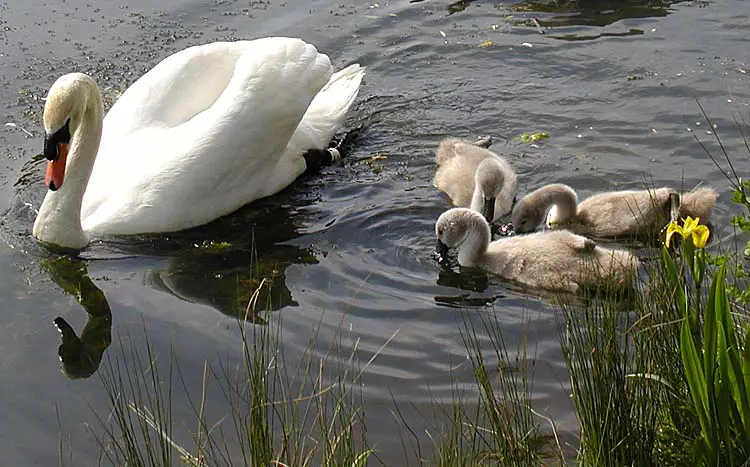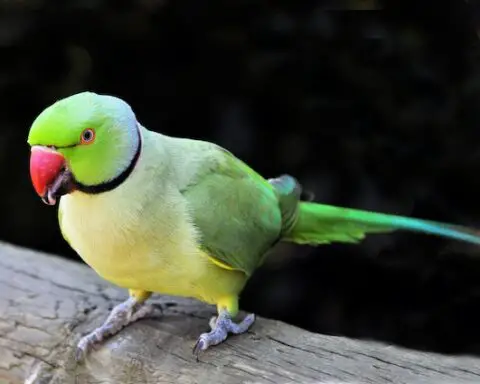This article confirms some of the essential mute swan facts. The Mute Swan belongs to the family of Cygnus olor and is endemic to Europe and Asia. These species have also been introduced in North America and Australasia. They are easily identifiable by their white plumages and orange bill. Mute swans mainly subside in the wetlands or other coastal waters.
Mute Swan Facts
- These birds measure 125 – 170 cm (49 – 67 inches) by length; few species are 127 – 170 cm (50 – 67 inches); however the average length of mute swan is 140 – 160 (55 – 63 inches). These are considered to be the second largest waterfowls after Trumpeter Swan.
- These types of ducks have a wingspan of 200 – 240 cm (79 – 94 inches).
- The average weigh of these kinds of birds is about 12 kg (26 lb). The males are slightly greater than females. Females weigh around 9 kg (20 lb). Few species weigh around 23 kg (51 lb).
- They do not hesitate to be approached by humans.
- They turn to white when they reach maturity.
- They usually build their nests near-water places like lakes and ponds where vegetation is abundant. These types of birds cover their nests by grass and weeds.
- Both parents are responsible for bringing the food for their chicks. However during breeding season, only males perform this duty.
What Do Mute Swans Eat
These species mainly feed on aquatic plants, agricultural crops, and wheat. They do not allow anyone to enter into their territory. A single colony consists of more than 100 pairs. They build nests after every 2 metres (7 feet) of distance. They are largely found in Baltic Sea, River Tweed in the Northern England.
Mute Swan Facts about its Threats
Mute swans are often predated by foxes, bears, lynxes, canids, and golden eagles. They are the aggressive birds
Where Do Mute Swans Live
- Mute swans are primarily found in Europe, Asia, and Russia. These waterfowls are not considered to be the migratory birds even though they migrate rarely.
- They are also found in Africa, Mediterranean, Iceland, Great Lakes, United States, and Bermuda. The largest population of these species is in Volga Delta where the numbers are 11,000 in total.
- There are more than 500,000 pairs around the world.
- There are more than 22,000 species exist in United Kingdom; in Germany, the numbers are 6,800 – 8,300, in Denmark 4,500, in Poland, 3,000 – 4,000 pairs, in Ireland 2,500 pairs, in Ukraine 1,200 – 1,700.
- Most of these waterfowls had been exterminated due to the extensive hunting while few of them were held as domesticated birds. Very small inhabitants reside in Australia, New Zealand, and South Africa.
- The population of mute swans is increasing at a pace of 10% each year and they are also known to wipe out the vegetation where they exist







